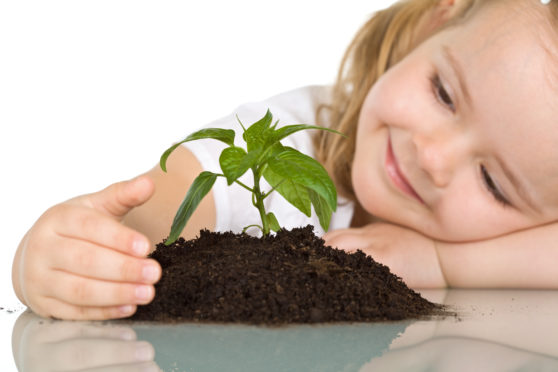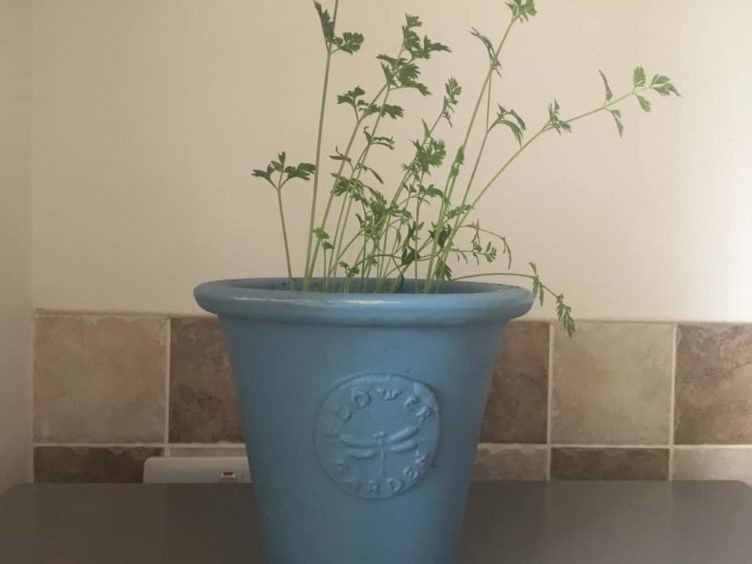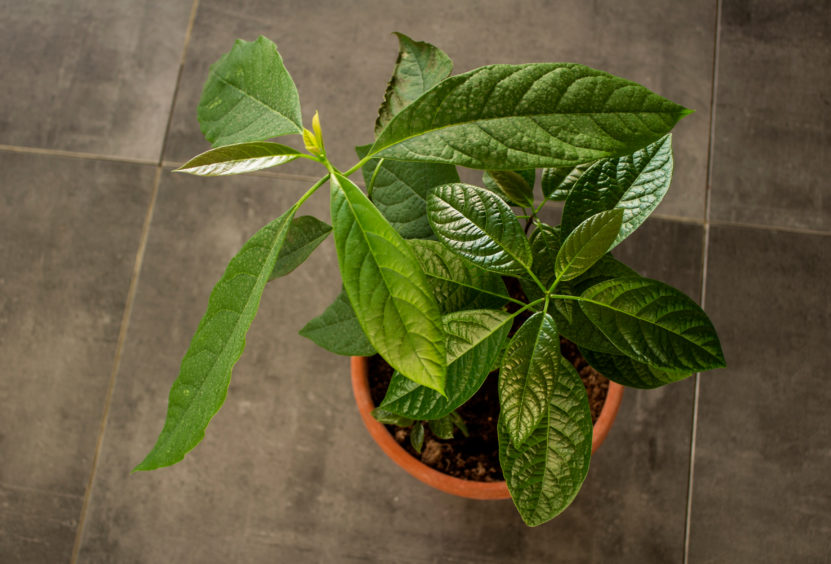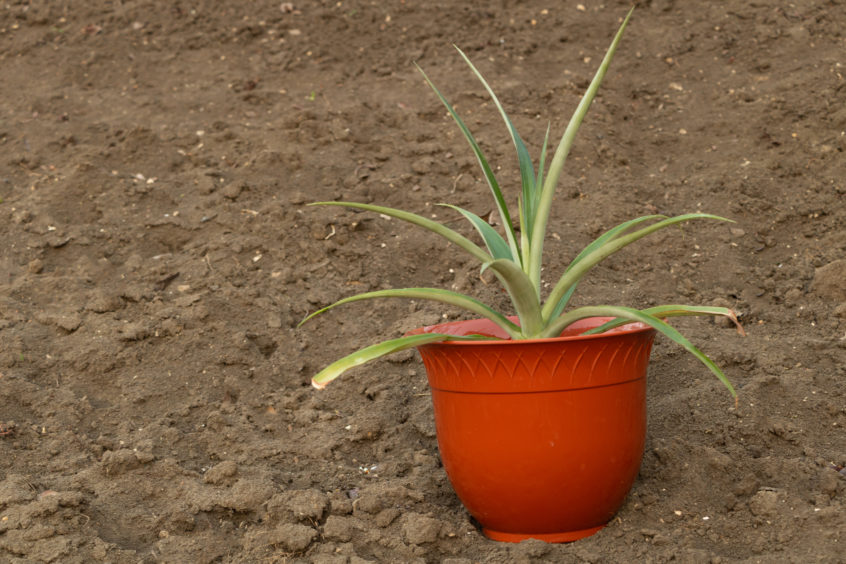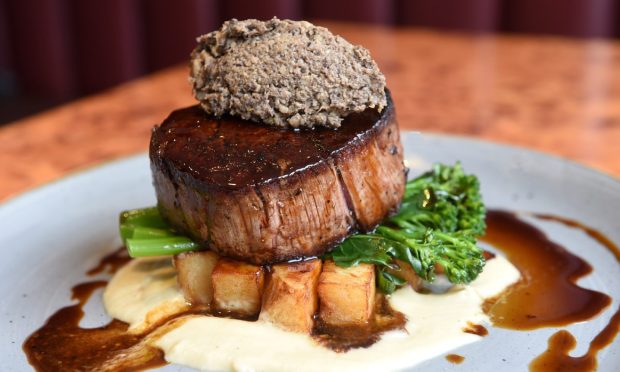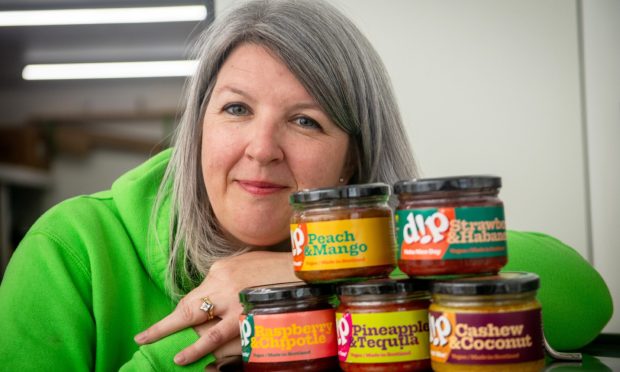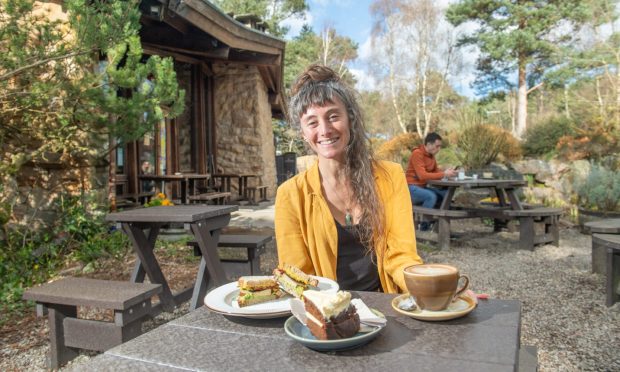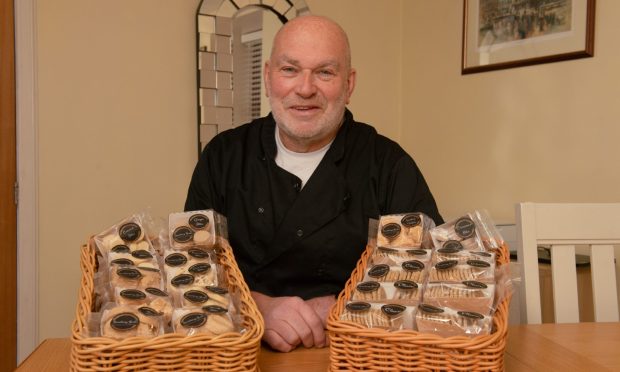Stuck for ideas to entertain the kids during lockdown? Look no further than your kitchen cupboards.
If you’re thinking you’ve been there, done that – there’s only so much bread and cakes you can bake, after all – you might like to try a little gardening project using fruit and vegetable scraps.
Planting scraps can be a fun, educational and, best of all, cheap way to keep kids busy at home and teach them about how their food is grown.
You don’t need any fancy equipment or a garden either – just a window sill, some standard potting soil, available at most supermarkets, a few small plant pots and your usual kitchen utensils.
Not only will you be preventing scraps going to waste, but you can also have the reward of watching your creations grow over weeks and months.
And although plants grown from scraps probably won’t yield actual fruit or veg – you need to grow them from seeds in specific conditions for that – it’s still a great way to let children observe the natural life cycles of foods they’d otherwise only see on supermarket shelves. Plus, they make interesting house plants that add a fresh note to your home.
Here are some easy ideas using everyday foods to get you started…
Carrots
Carrot greens (the part of the plant you see over the soil) can be grown quickly from carrot tops – the bit that normally goes in the bin. Chop off the top of a standard carrot, around an inch below the brown circle. Repeat the same with 3-5 carrots. Put the carrot tops in a Tupperware-type container, saucer or glass, with the brown circle facing up, filling the container with water to just below the brown bit. Place the container on a windowsill.
After 2-3 weeks you should start to notice green shoots sprouting up. Take the carrot tops out of the water and transfer to a small pot with soil fully covering the orange part of the plant, so that only the green shoots are visible.
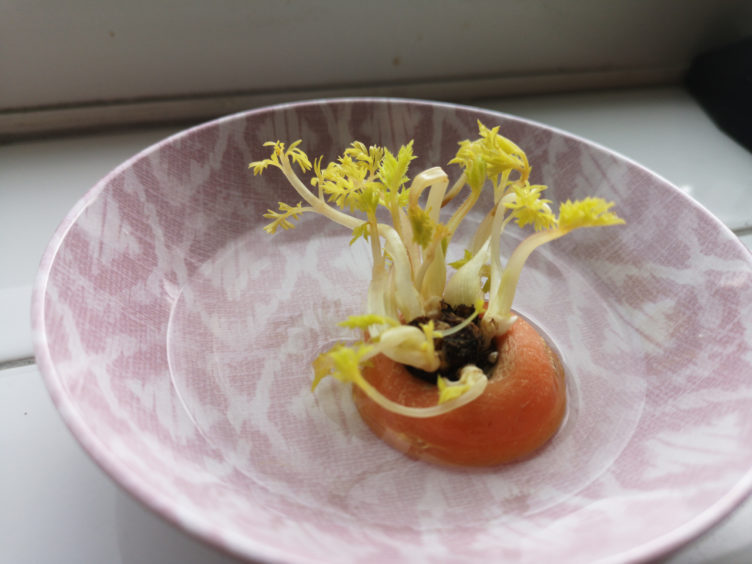
If you like, you can use the carrot greens as a herb in salads or cooking. They have a sweet, earthy flavour, a little like parsley and are full of nutrients such as vitamins C and A, fibre, calcium and iron.
Avocados
There’s a perception that exotic plants like avocado are difficult to grow and only thrive in tropical climates. That’s only true if you have ambitions to grow a full-sized tree that would bear fruit – but an avocado plant can also be kept small in a standard house-plant pot, and will survive just fine in Scotland, as long as you keep it inside.
You can grow an avocado plant from the fruit’s stone. Remove it from the fruit, wash the green residue off and leave out to dry for 24 hours. Fill a glass with water almost to the brim. Locate the bottom of the avocado stone – usually the broader part. Stick three toothpicks around the circumference of the stone, evenly spaced, then lower the bottom part of the stone into the water. The toothpicks should rest around the brim of the glass, preventing the stone from being fully submerged – only around 1/3 of it should be under water.
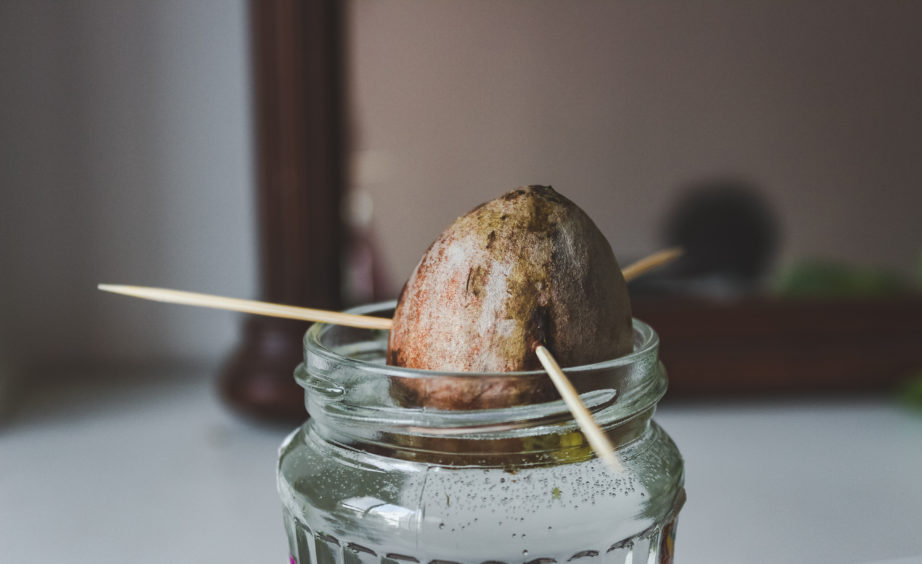
After a few weeks, a green stem and leaves should start to grow out of the top part of the stone, while roots grow out from the bottom. Transfer into a small to medium-sized pot, burying the stone under the soil so you can only see the green part of the plant.
Pineapples
Similar to avocado trees, pineapple plants grown in a Scottish home are unlikely to bear fruit but will add an exotic touch to your home and make a great learning experience for kids of all ages.
Cut off the top of the pineapple, including the leaves and a thick slice of the fruit. Plant the cutting, so the leaves are slightly above the soil line, then start watering from the top. Keep on a warm, sunny windowsill and ensure the soil is always damp, but not soggy. After a few weeks the leaves from the old pineapple fruit will start to wither and new ones will appear in their place.
Beans
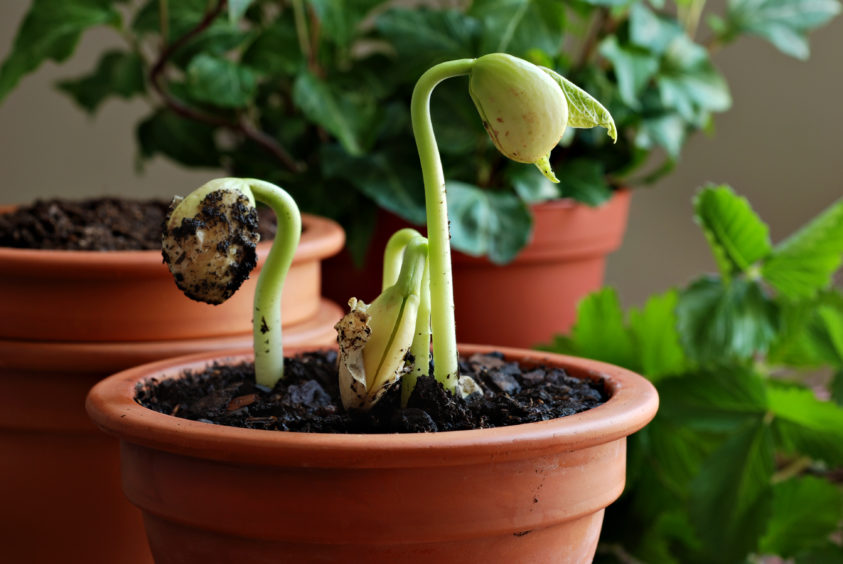
We all know the story of Jack and the Beanstalk, but you don’t need magic beans to grow your very own bean plant – ordinary ones from your local grocery store or supermarket will do. Bean plants grow quickly and easily, reaching more than 6ft in height if planted in a garden – hence the giant beanstalk in the popular children’s story. But for this exercise, you can grow yours in a pot and keep it small.
You’ll need 2-3 dried beans to do this – the ones you buy in packets, rather than in a tin. Butterbeans are always a good shout, but any variety will do. Soak a wad of cotton wool in water, then wrap the beans in it and place in a container such as a glass, cup or yoghurt pot. After a few days to a week you’ll start to notice green shoots sprouting from the beans. Transfer into a small pot with soil, so that the bean is buried and only the shoots are visible.
Onions
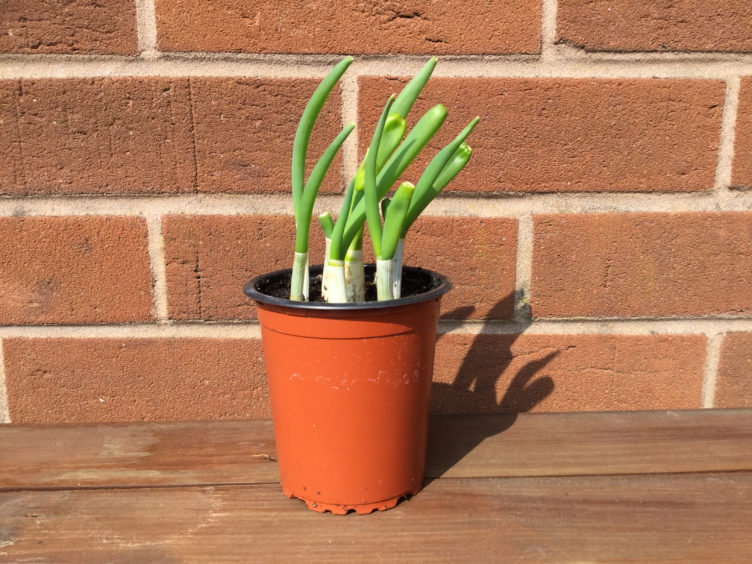
Onions are super quick and easy to grow from scraps. Chop a fresh onion, red or white, about one inch from the bottom. Leave it out to dry for 24 hours, with the cut side up. Poke three or four toothpicks into the circumference of the onion, evenly spaced, and suspend over a glass of water, with the cut side facing upwards. Leave on a windowsill. After a few days you should notice roots growing in the water and green shoots sprouting from the top end. Plant into a pot, covering the “bulb” part of the onion with soil. Similarly to carrot greens, you can use onion leaves in salads and cooking, if you wish.
Lettuce
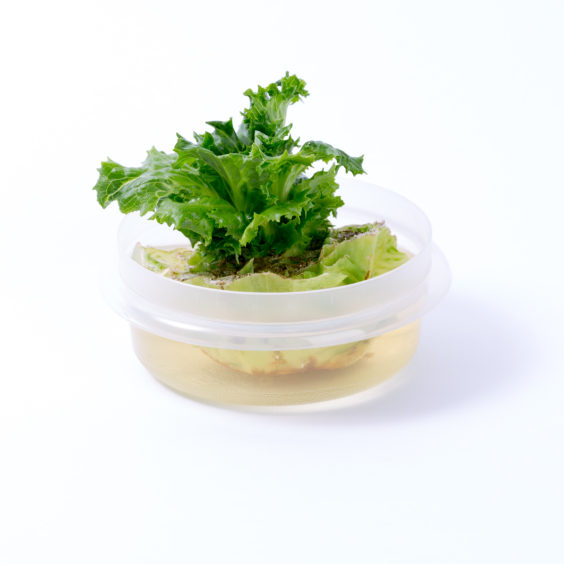
This tip on how to re-grow little gem lettuce comes courtesy of German food retailer Lidl and Jamie Butterworth, Royal Horticultural Society ambassador. Remove the leaves from the lettuce by cutting them approximately 1-2 inches from the bottom. Make sure you don’t cut the lettuce in half or remove the centre. Pop the stem in a bowl – making sure it can stand up – and add an inch of water. Change the water every other today to keep it fresh and don’t let it dry out. Within less than a week, you’ll see new leaves start to poke through the centre. Easy!
